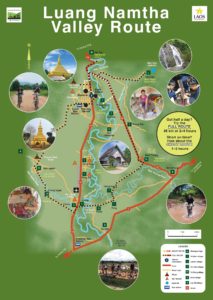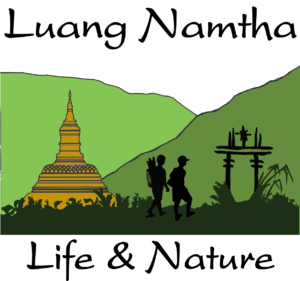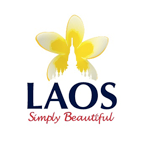Biking around Luang Namtha Town and around the province is a great way to visit villages and take in the beauty of the province’s iconic valley and mountain landscapes.

Bicycle Rental
You can rent bicycles and motorbikes in Luang Namtha on the main street at the two rental shops between Manichanh and Zuela guesthouses.
Things to Know: It’s best to rent a mountain bike if you are planning to ride the entire Namtha Valley Route. Please read your bike rental shop’s rules so that you know when to return the bike without being charged an extra day. (Usually, you need to return the bike at the end of the day or you’ll be charged an extra day.)

Namtha Valley Route by Bicycle
District: Namtha
Time: 1 – 4 hours
Difficulty: Easy
Description: The Namtha Valley is one of the most ethnically diverse and culturally rich areas in Laos and the region. Follow the signs of the Namtha Valley Route to eight main ethnic villages and five cultural and religious sites, where you will discover aspects of daily life and culture and take in the scenic beauty of the Valley.
Download a map of the Valley Route here. Follow the map to find all of the main attractions on the Valley Route and check distances and times between each.
Street Signs
Follow the Namtha Valley Route signs, which take you to all of the main villages and sites. The Loop starts on the main street at the, where you will see a map posted in front of the market and a sign at the corner.
Village Information Signs:
Every village has an information board that tells you about the village history, their ethnic group and culture and two things to look for in the village.
Attraction by following the route clockwise
1. Hat Yao Village is an ethnic Hmong village where you can see traditional Hmong embroidery and baskets being made by women around the village.
2. Nam Dee Village is an ethnic Lanten village where you can see cotton cloth dyed with indigo and production of natural bamboo paper, in addition tovisiting the community forest and waterfall.
3. Thong Jai Tai is an ethnic Tai Dam village where you can see weaving that is done using special, large looms and traditional alcohol production done by families.
4. Nam Thoung Village is an ethnic Tai Lue village known for vegetable production. You can check out what’s on sale at their local market and take a look at the village spirit post located nearby.
5. Sacred Forests and the Tai Dam Cemetery can be seen along the dirt road between Ban Poung to Ban Pasak. The colourful decorations of the women’s and men’s graves can be seen from the road.
6. Luang Khone Temple is located at Luang Village, an ethnic Kalom (Tai Yuan) village, and is the oldest Buddhist temple in the district.
7. Phieng Ngam Village is an ethnic Tai Daeng & Tai Khao village, which has a weaving center where you can learn about the weaving process, take a weaving or dying class or relax at the café.
8. Nam Ngaen Village is the largest ethnic Tai Dam village in the area and here you can visit the last professional traditional alcohol distillers and look around for silk and cotton weaving.
9. Nammat Mai Village is an ethnic Akha village, where you can see the spirits gate at the entrance (please do not touch!) and the traditional swing (used only during festivals) on the hill in the center of the village.
10. Poum Pouk Stupa was originally constructed in 1628 to demarcate neutral territory between the Kingdoms of Lane Xang in Luang Prabang and Lan Na in Chiang Mai.
11. Vieng Neua Village is an ethnic Tai Yuan (Kalom) village, which is considered the oldest ethnic group in the Valley and practices a mix of Buddhism and animism. Here you can see the village spirit post, the district spirit post and the new Vieng Neua Buddhist temple.
12. Vieng Neua Kao Temple is the old temple of Vieng Neua Village, before the village moved across the main road to make room for the extension of the airport. The old temple is still used by the village and is a peaceful place to visit.
13.Luang Namtha Stupa is perched on the mountain overlooking Luang Namtha Town, just a short walk from the main street. Sunset and sunrise is a good time to visit.



